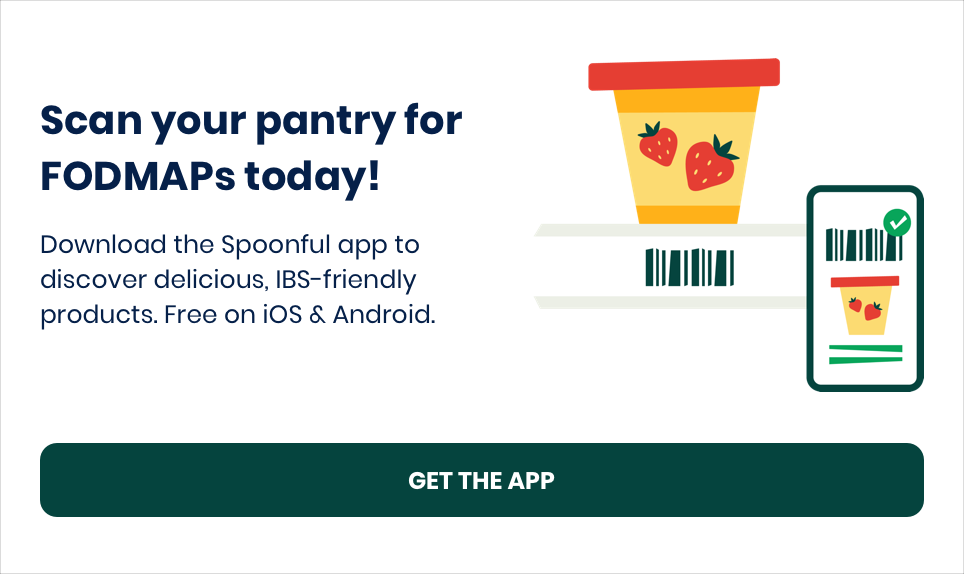Family meals are complicated! But what happens when you or someone in your family is following a specialized diet like the low FODMAP? You have probably had several questions cross your mind, like:
- How long is the FODMAP journey?
- What should I do or not do?
- Do I have to make two meals?
- How do other family members add FODMAPs to their meals?
All great questions! In this article, I will guide you through how to fit the low FODMAP diet into your family so that you can keep your FODMAPs low while the rest of the house stays healthy and well-nourished too.
I chose this topic, because I know parents are notorious for putting their kids first (sound familiar?). However, if you are experiencing digestive symptoms of IBS, then it is time for you to prioritize yourself. YOU ARE WORTH IT! You can’t give your best to your family when you aren’t feeling your best yourself.
Also remember that you don’t need to be perfect right from the start. This is a learning diet, so give yourself a bit of time and some slack. Your overall goal is to reduce your FODMAP intake enough to help you feel better, then find your triggers and expand your diet again.

How Long is the FODMAP Journey?
Did you know that the low FODMAP diet has three phases? If you answered yes, then pat yourself on the back because most people only know about the first phase. Here’s a quick overview:
- Low FODMAP Stage – The goal here is to lower your FODMAP intake, eat for good digestion, and reduce your symptoms. Monash, the pioneers of low FODMAP, recommend limiting this phase to 2-6 weeks. If you have been camping out here for more than six weeks, with or without symptoms, then you should reach out to a FODMAP trained dietitian to help you explore the Reintroduction phase.
- FODMAP Reintroduction – This is the most exciting part (in my opinion) as you will finally discover your FODMAP triggers… which is the whole point of doing this diet in the first place, right?! You can’t miss Vanessa Vargas’s fantastic and informative article titled, FODMAP Reintroduction: A Clear Thorough Guide to Identifying Your Triggers. This part can take another 4-8 weeks depending on a number of factors.
- FODMAP Personalization – You can finally expand your diet with the FODMAP foods that didn’t trigger symptoms. This is your long-term, personalized way of eating.
To answer the original question, the most challenging parts of the FODMAP journey are the first two stages. These may last anywhere from 6 to 12 weeks. And don’t forget: research shows that you will have more success with the diet when working with a FODMAP trained dietitian.
Stocking Your Pantry: Dos and Don’ts
Be careful not to create fear about high FODMAP foods. They are not bad or unsafe. High FODMAP foods are highly nutritious (hello baked beans and cauliflower rice). It’s just that they can be hard for some people (like you) to digest. Food fears and eating disorders are real. We don’t want you or other family members to develop disordered eating patterns.
Have a variety of both high and low FODMAP foods available. Don’t restrict other family members from eating high FODMAP foods. I know how hard it is to watch others eat your favourite foods, but remind yourself that this is a temporary way of eating. You will be able to expand your food choices in the long run.
Keep your family members consuming lactose containing milk and yogurt. There is no need for others to cut out lactose. Reducing lactose among people without digestive symptoms may unnecessarily increase the chances of developing a lactose intolerance in the future.
Do I Have to Make Two Meals?
No, you don’t need to make two meals. However, the low FODMAP diet should only strictly be followed by people who are medically recommended to do so. Placing unnecessary restrictions on other family members can be unhealthy, less nutritious, more complicated, and more expensive.
It’s about finding balance. Your family can eat their desired high FODMAP foods for breakfast, lunch, and snacks throughout the day. Dinner can be prepared in a low FODMAP way, then other family members can enjoy high FODMAP additions and condiments. Here’s how you can do that.
How to Add FODMAPs to a Low FODMAP Meal
The ideas below are to help you serve a combination of low and high FODMAP foods in the same meal:
- For weekend breakfasts like French toast, use both low and high FODMAP bread options. For pancakes and waffles, scan the Spoonful app for some delicious low FODMAP pancake and waffle mixes while others can have a high FODMAP version.
- Have low and high FODMAP fruit available in a fruit bowl so there is something for everyone to enjoy.
- For dinner meals, remove a low FODMAP portion, then add high FODMAP foods to the rest of the dish.
- On pasta night, cook a small pot of gluten free pasta and a larger pot of wheat pasta. Make a low FODMAP sauce that everyone can eat.
- For salads, use a low FODMAP oil and vinegar dressing while others use regular salad dressing
- Offer both low FODMAP and high FODMAP bread options.
- Take advantage of make-your-own meals like tacos and pizza, where you can adjust the types and amounts of higher FODMAP foods.
- Store a few low FODMAP meals in the freezer for the days that someone else is cooking dinner or when the family wants something that is impossible to make low FODMAP.
- For the low FODMAP foods that are either expensive or difficult to acquire, the family has to KEEP THEIR HANDS OFF!
If you’d like help with how to plan low FODMAP dinners for the week, you should check out my last Spoonful article – 5 Step Low FODMAP Meal Planning for Those Who Despise Meal Planning.
Bottom Line
It is time to prioritize yourself. Your family will adjust. The non-FODMAPers in your family can eat their usual high FODMAP foods for breakfast, lunch, and snacks. Dinners can be prepared in a low FODMAP way, and then high FODMAP additions can be added later. I hope this helps to reduce anything that may be holding you back.
Happy eating!
-Audrey

Thanks for the info. The Monash app is my bible
Thanks so much for your feedback Valerie. The Monash app is a life-changer! Spoonful makes low FODMAP living SO much easier as well! Best of luck on your FODMAP journey.
~Audrey
All practical, good advise. I fund myself ‘camped out in the first stage, because although I found many fodmap dietitioans, I also found that once your over 65/ retired/ insurance doesn’t pay for seeing dietitions. So, with the help of websites/ apps/ Ive begin the phase 2, albeit I’m still belching. Saw a gastro-in. once- who blew this off, aid it was probably food inolerances. (that kind of came out of nowhere)… So while it sounds sensible to find a dietitian, unless one has deep pockets, once your retired in the USA, its hardly possible, unless you also have conjestive heart failure or serious diabetes as well, which are covered for dietitions.
Hello Elaine,
It is so unfortunate that health insurance companies don’t see the value of dietitians. We see this all the time in Canada too. With that said, Spoonful does see value in the advice offered by dietitians and has given us an opportunity to share our knowledge here on their blog! Lucky for us and you!
Have you read Vanessa’s article about the FODMAP Reintroduction phase – https://spoonfulapp.com/fodmap-reintroduction/? It is an absolute must read with really high quality information.
Best of luck on your FODMAP journey,
Audrey